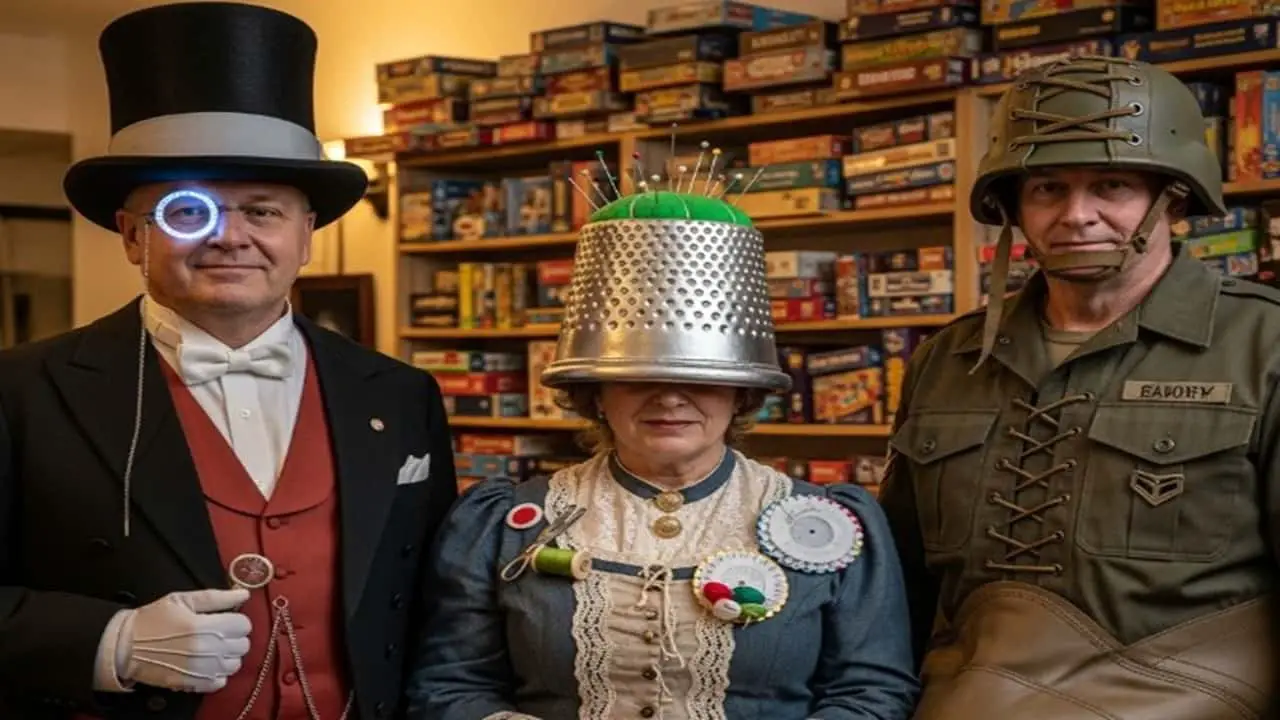There are a few things you can check, such as making sure that the iron is plugged in and that the power switch is turned on. Next, inspect the power cord or switch for damage and replace it if necessary. Another possibility is that the heating element inside the iron has burned out or may have been damaged.
Key Takeaways
- Clothes iron contains an electric heating element that produces heat when electricity passes through it.
- The heat is regulated by a built-in thermostat inside the iron.
- Over time, it’s possible for irons to break down due to several reasons, and repairing the bigger issues may not sound feasible.
- In most cases, iron may not heat due to common reasons such as a faulty power cord, tripped breaker, broken thermostat switch, or burned-out heating element.
Table of Contents
How does iron generate heat?
Clothes irons use electricity to generate heat with the help of a heating element inside.
These heating elements are usually made of steel, chromium, or iron.
The iron typically uses a process known as “thermo-coupling” to generate heat.
In short, this means that the iron has two metal plates that are connected together using a conducting material.
When electricity is passed through the plates, it causes them to heat up, which in turn heats up the material between them.
The heat is then transferred to the soleplate (the flat, metal surface that comes into contact with your clothes).
Finally, this heat is then transferred to the clothes that you are ironing.
What regulates the heat in an electric iron?
Most clothes irons have a thermostat that regulates the temperature of the electric iron.
Usually, the thermostat is near the tip of the iron and has a small knob or switch to control it.
When you set the temperature on the thermostat, it adjusts the amount of power going to the coils.
If you set it too high, the coils will get too hot and could damage your clothes, likewise, if you set it too low, your clothes won’t get ironed properly.
So basically, when you plug in the iron and turn it on, the coils inside the iron heat up.
That’s because electricity flows through the coils to create heat.
Here, the thermostat is a temperature-sensitive switch that controls the flow of electricity to the coils.
When you turn on the iron, the thermostat allows electricity to flow to the coils.
But as the iron heats up, the thermostat gradually cuts off the flow of electricity.
Once the desired temperature is reached, the thermostat turns off completely, as does the iron.
Why won’t the iron heat up?
It is very annoying to have a pile of clothes that need to be ironed, but the iron won’t heat up.
As a troubleshooting step, you can start by checking the basics.
Power supply
- Check if the iron is correctly plugged into the power outlet.
- Inspect if there is the availability of a power supply to the source by plugging in another device such as a mobile phone charger. Additionally, you can test it with an electrical tester.
If the above steps don’t work out, you can proceed below for further inspection.
Power cords
Unplug the iron and thoroughly inspect the power cord for wear-outs.
If you notice wear and tear, you may have to get it replaced.
Heating Elements
When used for a long time, the heating element may get broken or burn out.
If the heating elements are not working properly, they will not be able to heat up.
At times, it may be difficult to repair or replace the heating element on your own.
And, in some cases, you may have to replace the entire iron as a whole.
Faulty Thermostat
Another factor could be a faulty thermostat that regulates the heating.
Additionally, it could be due to an internal fuse or electrical wires that may have become faulty.
As an additional troubleshooting step, you can unplug the iron and leave it to cool completely. Try using it again after a few hours and see if that helps.
If you have tried everything yourself and it still isn’t working, then it’s time to call a professional.
Repairing major flaws may not seem worthwhile, and thus replacement becomes the wise option.
But before you decide to buy a new iron, you should check to see if it is still covered by the warranty.
Faulty Switch
Another issue that could be causing your iron to not heat up is a faulty switch.
The switch may have become damaged or worn out over time due to frequent usage.
If the switch is not working properly, it can stop the current from passing through the coils and prevent them from heating up.
In this case, you will have to replace the switch with a new one.
Just make sure to check the wires that connect to the switch for any signs of damage before narrowing down the issue to a faulty switch.
Faulty temperature control button
The last issue that could be causing your iron to not heat up is a faulty temperature control button.
If the button is not working properly, the iron won’t heat up to the right temperature.
In this case, you will have to replace the temperature control button with a new one.
Incorrect Settings
It is important to make sure that the settings of your iron are correct.
If you set the temperature based on fabric type and the heat setting is too low for that fabric, it won’t be able to heat up properly.
So, make sure to check if the temperature setting is correct before moving on to other troubleshooting steps.
Check for limescale buildup
A limescale build-up on the soleplate is a common reason why your iron isn’t heating up as much as it should.
The buildup clogs the plate and hinders its steam production.
So, try to clean the limescale off the soleplate with a damp cloth before using the iron again and see if that helps.
Check the pump
Your iron may also not be heating up if there is a problem with the pump.
If the pump isn’t working properly, it won’t be able to provide enough steam for the iron, resulting in poor heat production.
In this case, you may have to replace the pump.
Common mistakes likely to happen when troubleshooting iron issue
Here are some common mistakes individuals might make when trying to troubleshoot their iron’s not heating issue.
Ignoring Power Source Issues
Overlooking the possibility that the power outlet or power supply might be faulty.
Tip: Always ensure the iron is properly plugged into a functioning power outlet before attempting further troubleshooting.
Neglecting Basic Checks
Failing to check if the iron’s power switch is turned on or if it’s properly plugged in.
Tip: Start troubleshooting by verifying the power switch and plug to eliminate simple oversight.
Skipping Cord Inspection
Not examining the power cord for wear and tear or damage.
Tip: Thoroughly inspect the power cord for any visible signs of damage and replace it if necessary.
Ignoring Thermostat Settings
Setting the thermostat to the wrong temperature or leaving it too low.
Tip: Make sure the thermostat is set to the appropriate temperature for the fabric you’re ironing.
Disregarding Heating Element Condition
Overlooking the possibility of a damaged or burned-out heating element.
Tip: If the iron isn’t heating, consider the condition of the heating element and its connections.
Not Cleaning Limescale Buildup
Ignoring limescale buildup on the soleplate.
Tip: Regularly clean the soleplate to prevent limescale buildup, which can affect the iron’s heating efficiency.
Ignoring Faulty Switches
Not checking if the switch or temperature control button is working properly.
Tip: Inspect switches for any signs of damage and replace them if they’re faulty.
Disregarding Warranty Coverage
Not checking if the iron is still under warranty before attempting repairs.
Tip: Before making major repairs or replacements, check if the iron is covered by warranty to avoid unnecessary costs.
Not Seeking Professional Help
Attempting complex repairs without professional assistance.
If the issue persists after basic troubleshooting, consult a professional repair technician to avoid causing further damage.
Skipping Safety Precautions
Neglecting safety measures when troubleshooting electrical appliances.
Tip: Always unplug the iron and follow safety guidelines to prevent accidents or injuries.
Remember that accurate troubleshooting requires careful observation and consideration of various factors.
If in doubt, it’s always better to seek expert advice.
Safety tips when troubleshooting iron issues
Here are some safety precautions to take when troubleshooting electrical appliances, including irons.
Disconnect from Power Source
Always unplug the appliance from the power source before attempting any troubleshooting or repairs. This prevents accidental electric shocks.
Use Proper Tools
Use insulated tools designed for electrical work to reduce the risk of conducting electricity.
Wear Safety Gear
Wear appropriate personal protective equipment (PPE), such as gloves and safety goggles, to protect yourself from potential hazards.
Work in a Dry Area
Ensure your work area is dry and free from moisture to avoid the risk of electrical shorts.
No Wet Hands
Never touch electrical components with wet hands or when standing on wet surfaces to prevent electric shocks.
Switch Off Circuit Breakers
If you’re working on a fixed appliance, turn off the relevant circuit breaker to ensure no power flows to the appliance.
Inspect Wiring
Before touching any wires, visually inspect them for damage, exposed wires, or signs of burning. If damaged, do not proceed.
One Hand Rule
When working on an appliance with exposed wiring, use the “one hand in pocket” rule to minimize the risk of electric shock. Keep one hand away from the appliance while working with the other.
Avoid Flammable Materials
Keep flammable materials, such as paper or cloth, away from the appliance to prevent fire hazards.
Don’t Overload Outlets
Avoid plugging multiple appliances into a single outlet, as this can lead to overheating and electrical fires.
Check for Smoke or Burning Odor
If you notice any smoke, burning odor, or unusual sounds, immediately disconnect the appliance and do not attempt further troubleshooting.
Seek Professional Help
If you’re unsure about any aspect of the troubleshooting process, or if the issue is complex, consult a qualified repair technician.
Keep Children Away
To avoid mishaps, make sure that kids and dogs are kept away from the work area.
Work in a Well-Lit Area
Good lighting helps you see clearly and reduces the risk of making mistakes or accidental contact with live wires.
Use Ground Fault Circuit Interrupters (GFCIs)
If possible, use outlets with GFCIs, especially in areas where water might be present. GFCIs can prevent electrical shocks by cutting power when a fault is detected.
Avoid Makeshift Repairs
Do not use makeshift solutions like tape or wire to fix electrical issues.
Proper repairs should be made using appropriate tools and materials.
Always prioritize safety when working with electrical appliances.
If you’re uncertain about any step or encounter unexpected issues, it’s better to seek professional assistance to avoid putting yourself at risk.
Final Thoughts
Overall, the main reason why your iron is not heating up could be due to a faulty thermostat or switch or even worn-out heating elements.
Inspecting and replacing any of the above components may help you get your iron back in working condition.
Understanding why your iron won’t heat up is essential in order to find a suitable solution for it.
To make your iron last longer, use it with the right settings and take care of it regularly.
You can always talk to a local repairman to find out how bad the problem is and then decide whether to fix it or buy a new one.
Frequently Asked Questions
What is the average lifespan of electric iron?
Electric irons can last up to 10 years and more; however, due to technical upgrades, people tend to trash outdated irons before time.
Is it worth repairing an iron?
Minor flaws in external wiring or cords can be repaired affordably. However, faults in the internal components may not sound worth repairing.
What would you do if your flat iron did not heat up?
Start by checking if the appliance is plugged in properly, then inspect the adjustment knob. If the problem keeps coming back, look for signs of damage on the thermostat, switch, and heating elements. If all else fails, replace the iron with a new one.
You May Also Like
- How to use charcoal iron effectively? (Explained)
- How to use a Steam Iron effectively?
- Steam Iron: 21 Frequently Asked Questions on steaming
- What is an ironing board? (Explained with types)
- How to Iron Clothes Without an Ironing Board?
- Why does the dryer shake or wobble? (Answered)
- Why does the dryer smoke? (Answered)
- Why is the dryer not drying clothes?
- Why does the washing machine overfill? (Explained)
- Why are washing machines so heavy? (Explained)
- Why Does the Washer Turn Off Automatically?
- What is a FoldiMate in Laundry? (Benefits & Drawbacks)
- What is a Laundry Marker? (Explained)
- Difference Between Laundry Sink And Utility Sink (Explained)
- Laundromats OR Home Laundry? (Which is Cheaper?)
- Why do Korean Homes come with Washers but not Dryers?
- Why does the washer drain smell like sewage?





